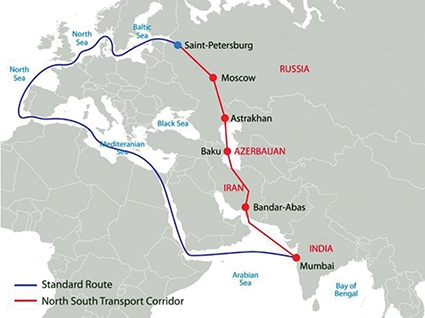Azerbaijan, Russia, Iran, India Begin Testing North-South Transport Corridor with a Rally
Azerbaijan, Russia, Iran and India on Sunday started testing the North-South transport corridor within the framework of a sports car rally. According to the Ministry of Roads and Urban Development of Iran, the event is organized jointly by the Federation of Freight Forwarders of India and the sports club Kalinga Motor. The Iranian bodies participating in the organization of the race are the Ministries of Foreign Affairs and Road Facilities, the Federation of Motorcycles and Vehicles and the Customs Board of the Islamic Republic of Iran.
The 30-day rally will take place on the Shiraz, Isfahan, Tehran, Kazvin, Rasht route to the Astara Port on Iranian territory, and then on through Moscow to St. Petersburg and back with the finish in Chabahar. 20 trucks are participating in the competition, one from Russia, Iran and Azerbaijan, the rest belonging to Indian teams, with 39 participants in all.
In reality, it is the first large-scale practical "wiring" of a caravan along the International Transport Corridor (ITC) "North-South", marking its readiness for large-scale real operation.
The North-South transport corridor is designed to connect Northern Europe with South-East Asia, including the unification of the railways of Azerbaijan, Iran and Russia. The railway Kazvin-Resht-Astara (Iran) - Astara (Azerbaijan) is part of the transport corridor "North-South." It is expected that the section of Resht-Astara, the construction of which is financed by Azerbaijan, will be built within three years.
This transport corridor will connect the port of St. Petersburg with the Iranian ports of Bandar Abbas and Chakhbehar in the Gulf of Oman, through which the sea branch reaches the Indian port of Mumbai.
As such, Indian manufacturers of goods sold in Europe receive significant savings in transport costs, and also enjoy a reduced time for delivery of goods to customers from 35 to 17 days. This means Delhi is acquiring some advantage over the European exports of its geopolitical rival - China.
At the first stage, the corridor is to be used to transport five million tons of cargo per year, and later - more than 10 million tons of cargo.
By Dimitri Dolaberidze











